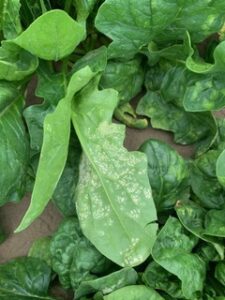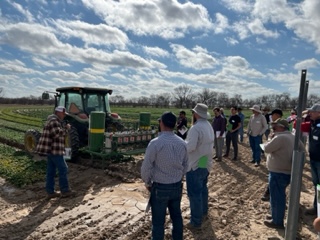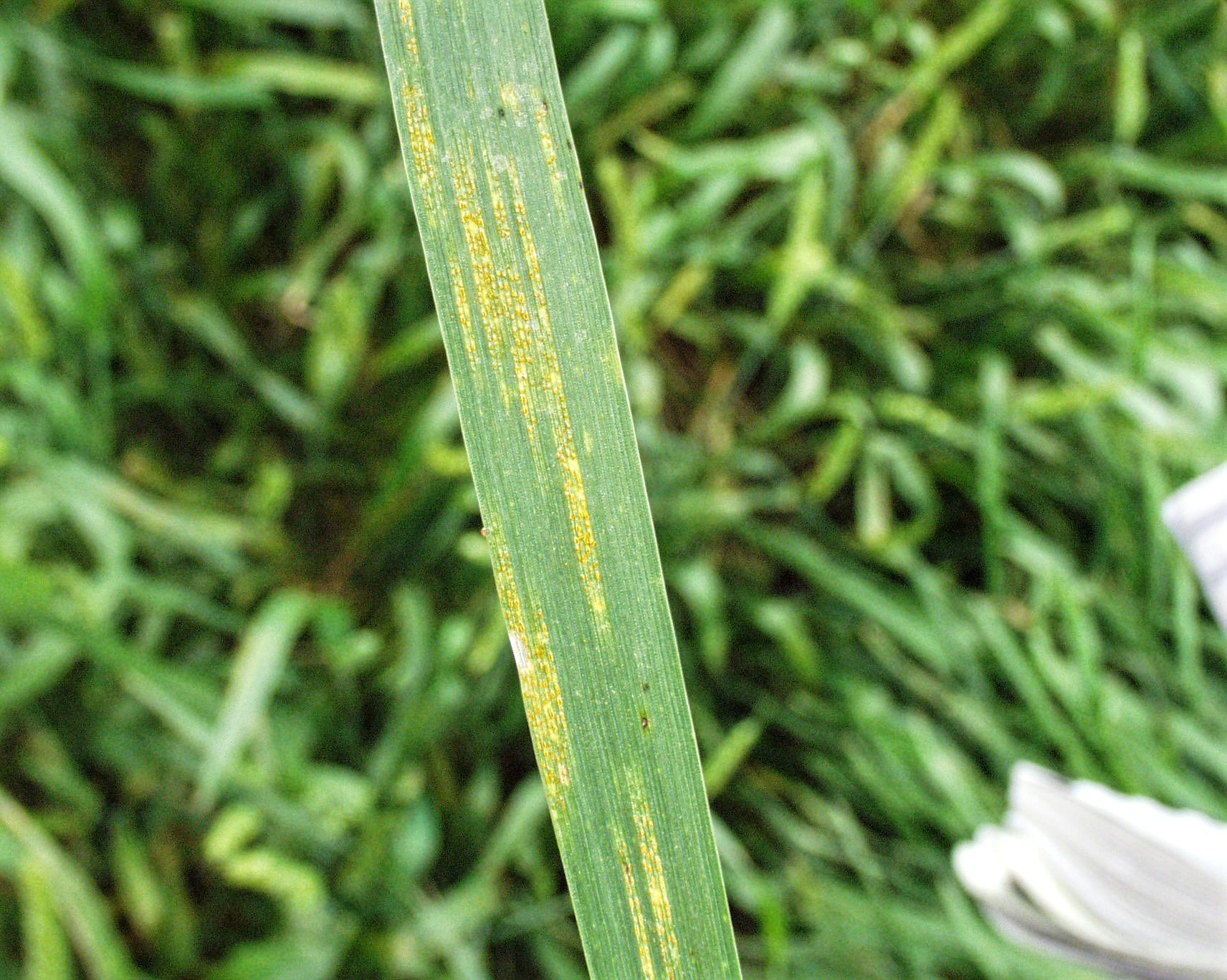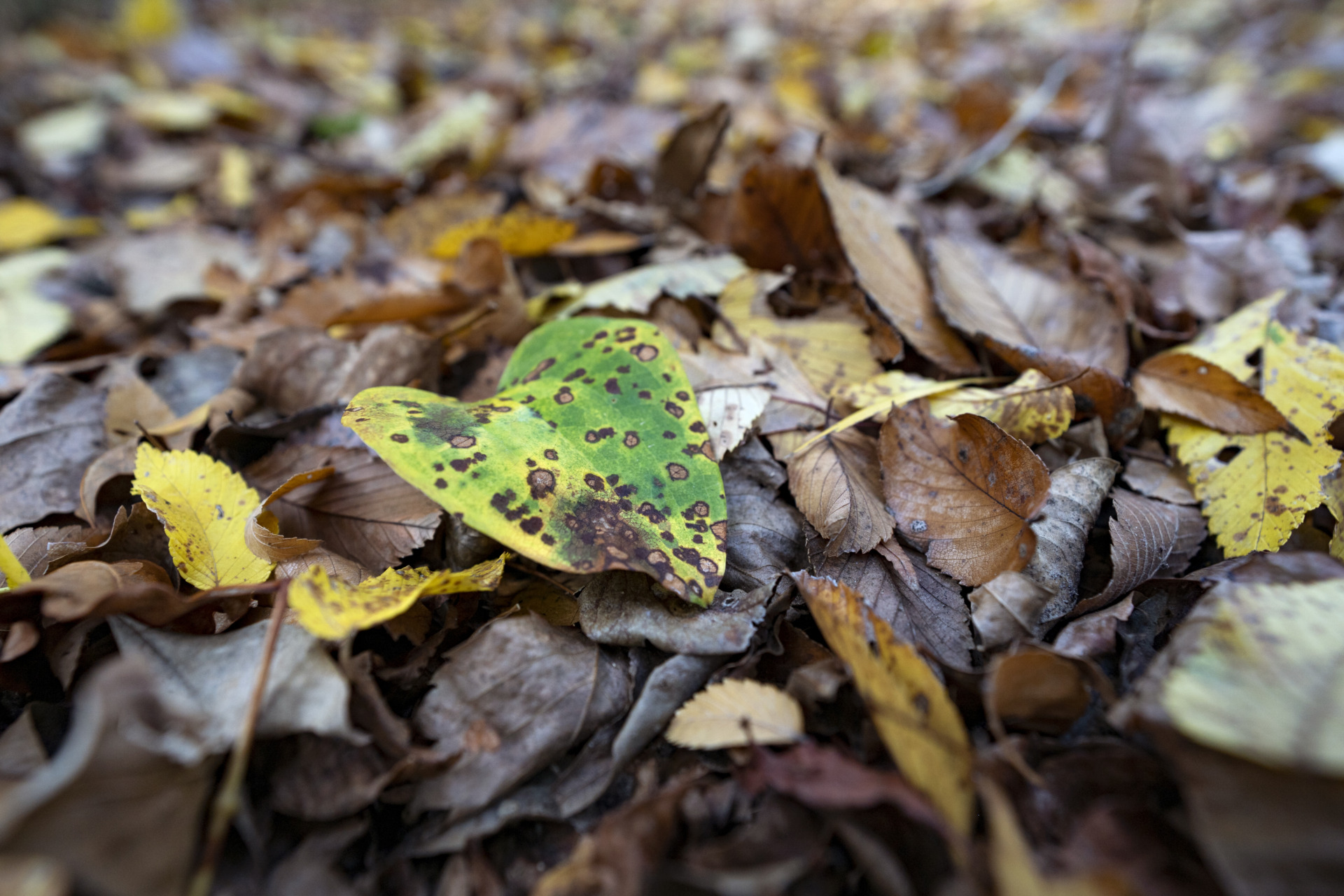Texas A&M AgriLife Research begins next phase toward breeding disease-resistant spinach
Multi-state project aims to develop cultivars resistant to five common spinach diseases
Hailed as a nutritional powerhouse for its high content of vitamins, minerals and antioxidants, spinach has remained one of the most popular vegetables in the U.S for decades. Unfortunately, some pathogens are just as eager to feast on spinach as the rest of us.

To combat damage from these pesky pathogens, Texas A&M AgriLife Research has advanced to the next stage of a four-year, multi-institution research project that seeks to breed spinach varieties resistant to the most common diseases by using molecular breeding techniques.
AgriLife Research received around $1.2 million from a $3.57 million U.S. Department of Agriculture, USDA, National Institute of Food and Agriculture Specialty Crop Research Initiative grant.
Texas efforts will be led by principal investigator Carlos Avila, Ph.D., AgriLife Research associate professor in vegetable breeding at the Texas A&M AgriLife Research and Extension Center in Weslaco and professor in the Texas A&M College of Agriculture and Life Sciences Department of Horticultural Sciences.
Other Texas A&M AgriLife scientists involved include:
- Juan Enciso, Ph.D., Texas A&M AgriLife Extension Service vegetable specialist and professor in the Department of Biological and Agricultural Engineering, Weslaco, who will be focusing on limiting the impact of irrigation on disease incidence.
- Larry Stein, Ph.D., AgriLife Extension horticulture specialist at the Texas A&M AgriLife Research and Extension Center in Uvalde and associate head of the Department of Horticultural Sciences, who will lead the extension aspect of the project by conducting field days and offering information on best practices on spinach production,
- Samuel Zapata, Ph.D., professor in the Department of Agricultural Economics, McAllen, who will concentrate on the economic analysis of production and costs associated with disease.
Ainong Shi, Ph.D., vegetable breeder and professor of horticulture for the University of Arkansas, is leading the collaborative project, which also involves researchers from Washington State University, the University of Arizona, the University of Massachusetts and the USDA-Agricultural Research Service in Salinas, California.
“Developing disease-resistant spinach varieties is a diverse problem,” Avila said. “We have teams of breeders, plant pathologists and agricultural economists that will be concentrating on regional spinach diseases and their effects. This is a collaborative effort, and it’s important and exciting that we have people with varied expertise focused on a specific challenge.”
Disease-resistant spinach to combat crop losses
According to USDA cash receipts for 2022, about 98% of spinach sales in the U.S. were in California, Arizona and Texas.
Each of these lead spinach-producing states faces its own most troublesome diseases. In Texas, the most concerning diseases are white rust, anthracnose and Stemphylium leaf spot. In California, the main culprit is downy mildew. In Washington, it’s Fusarium wilt.

These diseases limit producers’ ability to meet demand and threaten commercial production, affecting both yield and quality. Finding biological ways to control diseases could improve economic outcomes for farmers while also reducing chemical use on crops.
“Even if an infestation is minor and doesn’t significantly affect a grower’s yield, any damage in quality makes the spinach unsellable,” Avila said. “The tolerance is zero. It must be clean to be sold.”
Many growers manage infestation by using fungicides, but Avila said the most effective, long-term solution to prevent these diseases is to develop resistant varieties that require little to no pesticides. This is especially important as market demand shifts toward more organic production.
But developing disease-resistant spinach isn’t as straightforward as it might be for other crops. Disease-resistant cultivars are typically bred by selecting plants that express resistance and self-pollinating them to propagate future generations with the resistance trait.
Because most spinach breeding lines are dioecious, with separate male and female plants, fixing desired traits by inbreeding can be challenging.
“Spinach is a difficult crop to breed, and it’s traditionally been a time-consuming process,” Avila said. “That’s why, in this project, we’re using molecular breeding techniques that accelerate the process.”
Molecular breeding in spinach
Molecular breeding is a technique that often uses molecular markers, or regions of DNA, to predict and detect certain traits, such as disease resistance. This method significantly reduces the time required for field testing, typically cutting years or even decades off the breeding process.
“The main benefit of molecular breeding is that it allows us to be independent from variation in the field,” Avila said. “And this is important because disease pressures vary from year to year; some years, there isn’t any disease, and so we can’t advance much in selection. But, if we can identify these markers that help us select for resistance in the lab even before putting the plants in the field, we can be much more efficient and focus on other traits like quality and yield at the same time.”
In the previous project, which ran from 2017 to 2021, researchers identified resistant germplasms and molecular markers associated with resistance to the three most common spinach diseases: downy mildew, white rust and Fusarium wilt.
Over the next few years, researchers hope to validate these markers, select those that are most effective and use them in the breeding process to develop disease-resistant cultivars. In response to feedback from producers, this project will expand to include two additional diseases, Stemphylium wilt and anthracnose.
Project expectations
By validating these markers, Avila said scientists will be able to develop spinach breeding lines that carry resistance traits adapted to U.S. production, ultimately reducing the need for pesticide applications and increasing spinach crop performance.
Additionally, he said new molecular breeding tools and knowledge will likely speed up cultivar development in the future.

“We plan to check these results, these markers, year over year to see how they perform and how we can use them in our breeding projects,” Avila said. “We also know that, in the future, there will probably be other spinach diseases that emerge.
“Molecular breeding is somewhat behind in spinach compared to other crops, but, with this research, we’ll hopefully have the tools to speed up the development of cultivars we might need later.”
In the short term, as producers continue to manage the diseases, the researchers will develop an outreach program with economic decision-making tools and information dedicated to spinach disease mitigation.
“We want to deliver something practical, and producers need solutions today,” Avila said. “We are working with them on best practices for pesticide applications and using commercially available germplasms to identify tolerant or resistant varieties they can use while we develop new varieties.”





